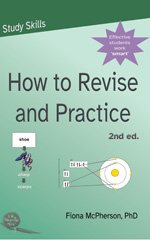Memory Champions
- A study of exceptional memorizers has revealed no superior cognitive abilities, and no structural differences in their brains.
- It has revealed differences in brain activity that seem to reflect the use of a spatial mnemonic; 9 of the 10 memory champions confirmed their use of the method of loci.
- Despite many years of practice in mnemonics, and impressive performances in memorizing, there were no increases in gray matter, as there have been in the cases of those with expert knowledge.
In 2002, a British study scanned the brains of ten "superior memorizers" — eight leading contenders in the World Memory Championships, and two individuals previously studied for their extraordinary memory accomplishments — all people that had demonstrated truly impressive feats of memory, in terms of the ability to quickly memorize hundreds of numbers or unrelated words. The ten "memory champions" were matched with ten controls, who had no memory capabilities out of the ordinary.
Testing revealed that the memory champs scored about the same as the controls on general cognitive ability, but did, unsurprisingly, score higher on working memory and long-term verbal memory. They didn't differ in visual memory.
Participants in the study were shown three sets of images; faces, snowflakes and three-digit numbers. The numbers, being the sort of items which the memory champs excel at, were expected to show large performance differences between the two groups. Faces are a class of stimuli for which most people have a considerable expertise in, so a smaller difference was expected. And snowflakes are a very difficult visual pattern to verbalize, and it was expected that both groups would be equally poor at remembering them.
Their brains were scanned while the participants were asked them to remember which ones they had seen, and the order they were shown in. The expected differences in performance were indeed found, allowing the researchers to differentiate between brain activity that reflected the learning prowess itself from the activity reflecting the amount of information learned.
A number of brain regions were of course active in all tasks, for both groups. But there were differences between the two groups, both in terms of greater activity in some regions, and, more interestingly, in terms of the memory champs using brain regions not used by the controls. Most particularly, regardless of task and regardless of performance, the memory champs engaged the left medial superior parietal gyrus, bilateral retrosplenial cortex, and right posterior hippocampus. These areas are all known to be involved in spatial memory and navigation.
On questioning, nine out of ten memory champions advised that they used the loci mnemonic for some or all of the tasks.
The researcher concluded, "Superior memory was not driven by exceptional intellectual ability or structural brain differences. Rather, we found that superior memorizers used a spatial learning strategy, engaging brain regions such as the hippocampus which are critical for memory and for spatial memory in particular."
As another researcher commented, "If you use the right technique, with a lot of application and hard work you can improve your memory. It certainly doesn't look like it's a question of neurological machinery."
The most interesting finding from this study was that, among the memory champs, there were no changes in gray matter volume, despite the fact that these people had been practicing mnemonics for an average of 11 years (a range of 3 to 38.5). Similar brain scans of musicians and London taxi drivers have found significant increases in gray matter volume as a function of number of years practice/experience. This finding would seem to support the view that practice in rote learning strategies doesn't have the benefits of strategies that develop understanding and mastery of meaningful knowledge, in terms of building new connections and growing new neurons.
On that note, you might like to read my article on photographic memory (and whether it's really as desirable as all that.)
- Maguire, E.A., Valentine, E.R., Wilding, J.M. &Kapur, N. 2002. Routes to remembering: the brains behind superior memory. Nature Neuroscience, 6, 90-95.
- Brain scan clues to 'memory marvels'. BBC article, 16 December 2002. http://news.bbc.co.uk/2/hi/health/2580867.stm
- Master memories are made not born. New Scientist article, 15 December 2002. https://www.newscientist.com/article/dn3181-master-memories-are-made-no…

